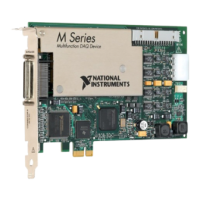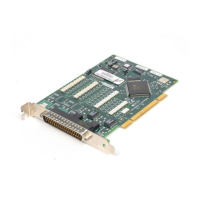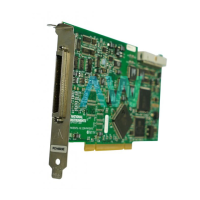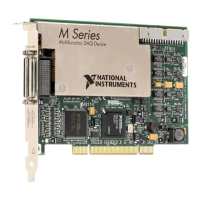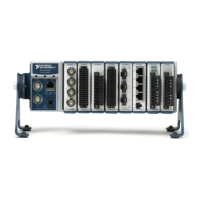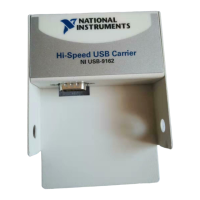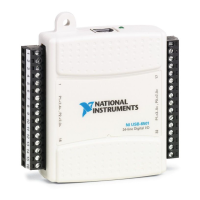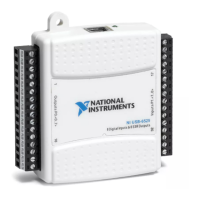© National Instruments | 4-13
X Series User Manual
When to Use Referenced Single-Ended (RSE) Connections with
Floating Signal Sources
Only use RSE input connections if the input signal meets the following conditions:
• The input signal can share a common reference point, AI GND, with other signals that
use RSE.
• The input signal is high-level (greater than 1 V).
• The leads connecting the signal to the device are less than 3 m (10 ft).
DIFF input connections are recommended for greater signal integrity for any input signal that
does not meet the preceding conditions.
In the single-ended modes, more electrostatic and magnetic noise couples into the signal
connections than in DIFF configurations. The coupling is the result of differences in the signal
path. Magnetic coupling is proportional to the area between the two signal conductors. Electrical
coupling is a function of how much the electric field differs between the two conductors.
With this type of connection, the NI-PGIA rejects both the common-mode noise in the signal and
the ground potential difference between the signal source and the device ground.
Refer to the
Using Referenced Single-Ended (RSE) Connections for Floating Signal Sources
section for more information about RSE connections.
Using Differential Connections for Floating Signal Sources
It is important to connect the negative lead of a floating source to AI GND (either directly or
through a bias resistor). Otherwise, the source may float out of the maximum working voltage
range of the NI-PGIA and the DAQ device returns erroneous data.
The easiest way to reference the source to AI GND is to connect the positive side of the signal
to AI+ and connect the negative side of the signal to AI GND as well as to AI- without using
resistors. This connection works well for DC-coupled sources with low source impedance (less
than 100 Ω).
Note (NI USB-6341/6343/6346/6361/6363 BNC Devices) To measure a floating
signal source on X Series USB BNC devices, move the switch under the BNC
connector to the FS position.
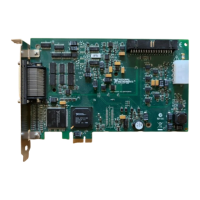
